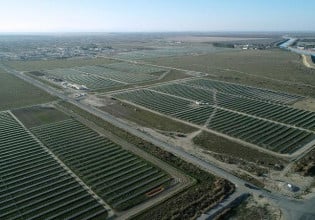Daihatsu Develops New Fuel Cell Technology That Uses No Precious Metals
Daihatsu Motor Co., Ltd. (Daihatsu) announced that it has, working with Japan’s National Institute of Advanced Industrial Science and Technology (AIST), developed a new fundamental fuel cell technology that completely eliminates the need for platinum, a precious metal that has been an essential material in the electrode catalyst in conventional fuel cells for automobiles. The new technology also fixes hydrazine hydrate inside the fuel tank to ensure its safe use as a fuel, resulting in no CO2 emissions at all. This proprietary fuel cell technology is said to provide numerous benefits, including resource conservation, low cost, high output, and safe and easy fuel handling.
According to the company, the fuel cells currently being used in fuel cell vehicles employ strongly acidic electrolyte membranes and therefore must possess high corrosion resistance. Consequently, the use of expensive platinum in the electrode catalyst material is essential. Additionally, the large amount of platinum that must be used has become one of the factors hindering the widespread adoption of fuel cell vehicles.
In contrast, the newly developed technology uses alkaline electrolyte membranes. This allows inexpensive metals such as cobalt and nickel to be used as an electrode catalyst (instead of platinum), and other inexpensive materials to be used in the separator and other component parts. As a result, it is said to help conserve valuable resources of precious metals and significantly reduces cost.
Conventional fuel cells that use liquid fuels such as methanol are said to have poor reactivity and thus cannot produce the output necessary for automobiles. Using hydrazine hydrate, which possesses excellent reactivity, as the fuel and a newly developed electrode catalyst, it is claimed that the new fuel cell can produce a high output of 0.5 W/cm² (as measured by Daihatsu), which is comparable to the output obtained from a hydrogen fuel cell using platinum.
Since hydrazine hydrate is a liquid fuel, it is easy to handle during filling and its energy density is also high. Furthermore, hydrazine hydrate is said to result in no CO2 emissions at all, and is an environmentally friendly synthetic fuel.
At the same time, high-concentration hydrazine hydrate is designated as a poisonous substance under the Poisonous and Deleterious Substances Control Law, and it must be handled under the same safety standards applicable to gasoline and most industrial chemicals. With the objective of ensuring safe use, Daihatsu developed a technology that fixes the hydrazine hydrate inside the fuel tank through the use of a polymer, minimizing the adverse effects that any dispersed fuel could have on humans or the environment should the fuel tank be damaged during a collision, for example, but that makes the required amount of liquid hydrazine hydrate available in a timely manner for electricity generation in the fuel cell.
With the goal of helping to preserve the global environment, Daihatsu will accelerate further research and development of this technology. However, since various issues must be resolved, including improvements in the polymer for fixing the fuel, enhancement of both the performance and durability of the fuel cell, and establishment of the necessary infrastructure, Daihatsu hopes to establish wide-ranging partnerships with relevant parties and proceed with further R&D.






